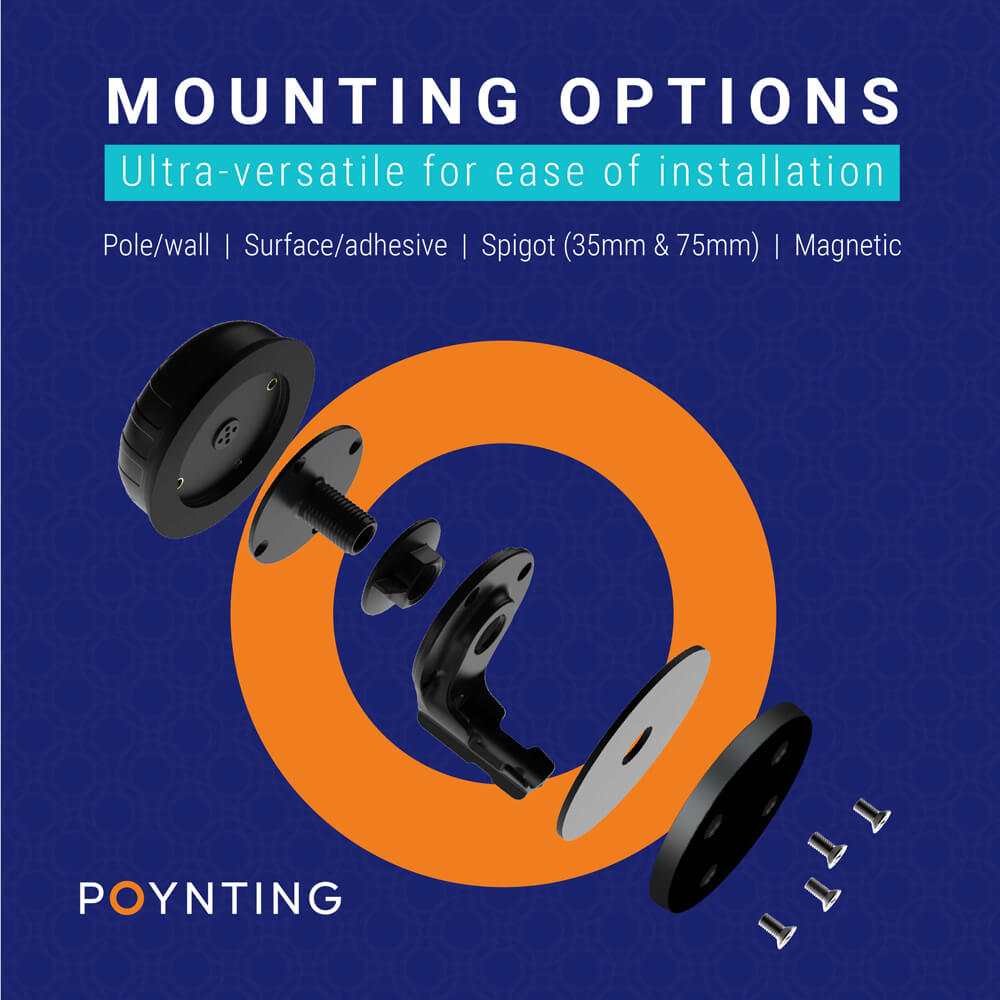Choosing the right antenna for your IoT application is crucial for ensuring reliable connectivity and optimal performance. Here are five key factors to consider when selecting an IoT antenna:
The frequency range and bandwidth are essential to ensure the antenna operates effectively within the required network bands. Different IoT applications rely on specific frequency bands, so it’s important to select an antenna that supports these frequencies.
For example:
For more detailed frequency range and bandwidth specifications, refer to the product datasheets on the POYNTING website.
POYNTING’s antenna range covers a wide spectrum of frequencies, ensuring seamless connectivity across global markets. This makes it a versatile choice for IoT and mobility applications, providing reliable performance wherever your devices are deployed.
What to Look For:

The antenna’s form factor should fit seamlessly into your system or device, considering both size and integration. Depending on your application, you might need a smaller, compact antenna, but keep in mind that smaller antennas may compromise performance.
What to Look For:
POYNTING’s antenna range is compact yet powerful, offering exceptional electrical performance despite its small size. Its variety of mounting options simplifies installation, making it a practical choice for IoT and M2M applications where space is a constraint.
The efficiency and gain of the antenna determine its range and signal strength. Higher gain antennas provide more coverage but are often larger and more directional. Conversely, omnidirectional antennas offer 360-degree coverage and are better suited for mobile or widespread applications.
What to Look For:
Remember, the antenna is just one part of the system. Along with the IoT gateway/router and SIM card, the antenna ensures optimal performance. A high-quality antenna helps avoid issues like poor connectivity, which could lead to troubleshooting and extra costs.
The environment in which the antenna will operate plays a significant role in its performance. If the antenna will be exposed to harsh conditions, such as extreme temperatures or outdoor elements, it’s important to choose one with suitable environmental protection.
What to Look For:
In remote areas, lower frequency bands (e.g., 700 MHz) work better for long-range communication. Understanding the environmental factors will ensure your antenna performs reliably, no matter where it's installed.

As IoT technology evolves, so do the antennas designed to support it. Choosing an antenna that supports the latest technologies ensures your IoT system remains future-proof.
What to Look For:
For instance, if your system will be deployed globally, an antenna must handle different frequency bands across Europe, the U.S., and South America.
Selecting the right antenna for your IoT application involves considering factors such as frequency range, form factor, efficiency, environmental conditions, and technology compatibility. By understanding these key elements, you can ensure that your antenna meets the specific needs of your application, providing reliable connectivity and optimal performance.